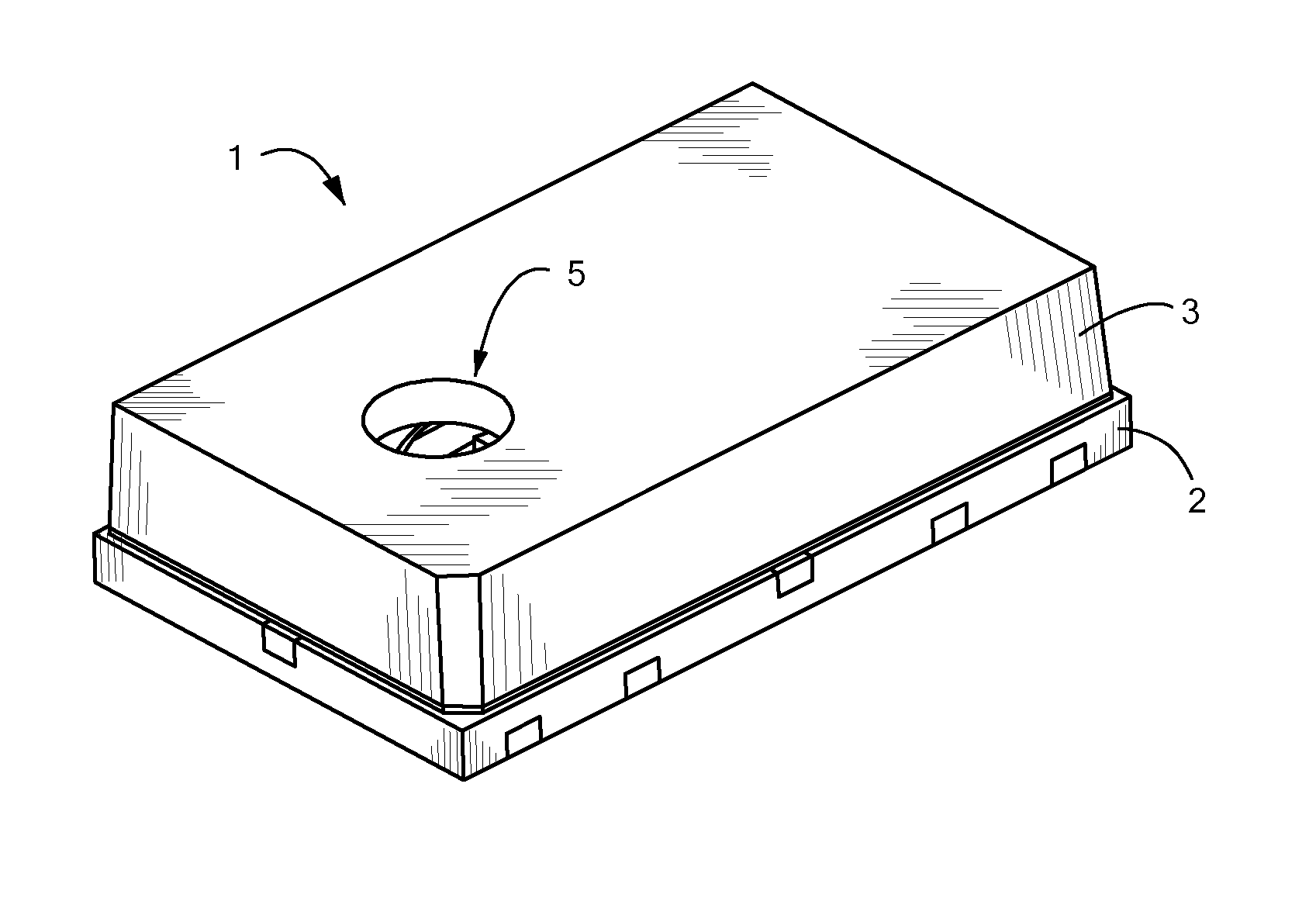Microphone with Parasitic Capacitance Cancelation
a technology of parasitic capacitance and microphone, which is applied in the field of microphones, can solve the problems of parasitic capacitance between the backplate and the diaphragm of the microphone, limiting the sensitivity and requiring significant complexity and power, so as to improve the performance of the mems microphone and eliminate parasitic capacitan
- Summary
- Abstract
- Description
- Claims
- Application Information
AI Technical Summary
Benefits of technology
Problems solved by technology
Method used
Image
Examples
first embodiment
[0005]In accordance with the invention, a MEMS microphone has a diaphragm, a backplate, a sensor, a reference electrode, and a circuit. The diaphragm is moveably coupled with an anchor, and the anchor is fixedly coupled to a substrate. The backplate is separated from the diaphragm by a dielectric fluid, and is fixedly coupled to the anchor by a dielectric solid. There is a first capacitance between the backplate and the diaphragm, and a second capacitance between the backplate and the anchor. The sensor measures a capacitance between the backplate and the diaphragm. This capacitance is substantially equal to the sum of the first capacitance and the second capacitance. The reference electrode is embedded within the dielectric solid. There is a third capacitance between the reference electrode and the backplate that is substantially the same as the second capacitance. The circuit subtracts the third capacitance from the capacitance measured by the sensor to produce an output capacitan...
second embodiment
[0007]In accordance with the invention, a MEMS microphone has a backplate, an anchor, a diaphragm, a reference capacitor, and a circuit. The backplate and the anchor produce a parasitic capacitance. The diaphragm is movably secured to the anchor and spaced from the backplate, so that the diaphragm and backplate form a variable capacitor having a primary capacitance. The reference capacitor has a reference capacitance that is substantially equal to the parasitic capacitance. The circuit has an input that receives the primary capacitance, parasitic capacitance, and the reference capacitance. The circuit is configured to subtract the parasitic capacitance from the primary capacitance and the parasitic capacitance to produce an output capacitance substantially equal to the primary capacitance.
[0008]The MEMS microphone system of the second embodiment may have a first die and a second die, the first die including the variable capacitor and reference capacitor, the second die including the...
PUM
| Property | Measurement | Unit |
|---|---|---|
| capacitance | aaaaa | aaaaa |
| dielectric | aaaaa | aaaaa |
| parasitic capacitance | aaaaa | aaaaa |
Abstract
Description
Claims
Application Information
 Login to View More
Login to View More - R&D
- Intellectual Property
- Life Sciences
- Materials
- Tech Scout
- Unparalleled Data Quality
- Higher Quality Content
- 60% Fewer Hallucinations
Browse by: Latest US Patents, China's latest patents, Technical Efficacy Thesaurus, Application Domain, Technology Topic, Popular Technical Reports.
© 2025 PatSnap. All rights reserved.Legal|Privacy policy|Modern Slavery Act Transparency Statement|Sitemap|About US| Contact US: help@patsnap.com



